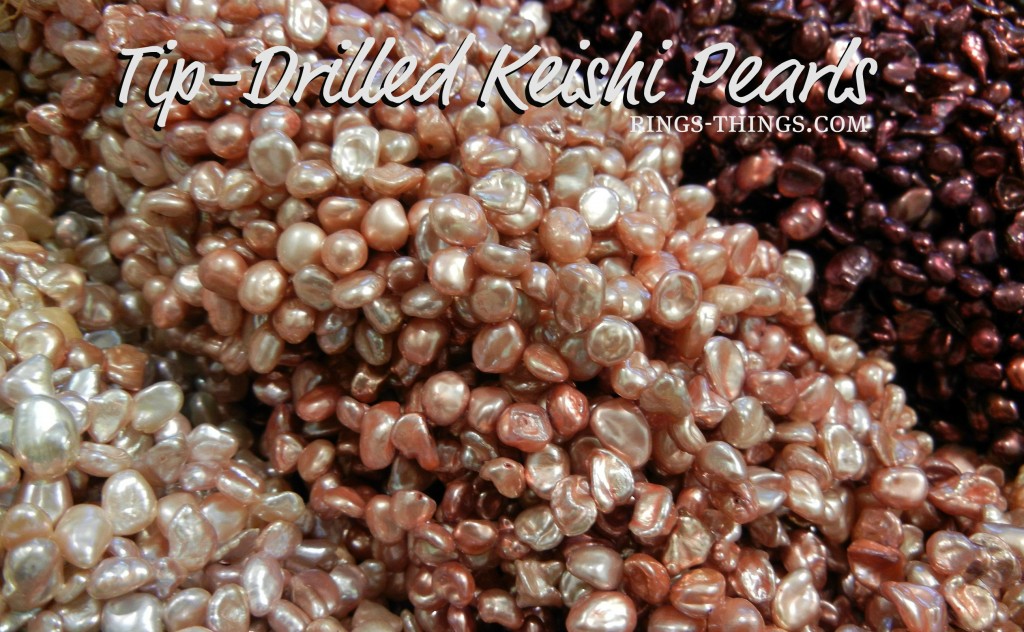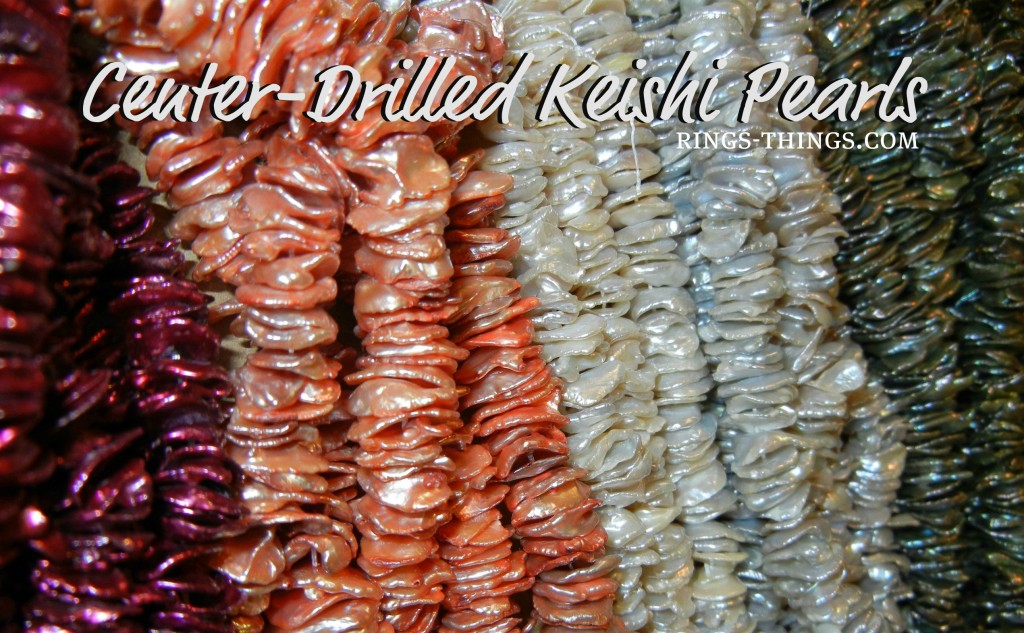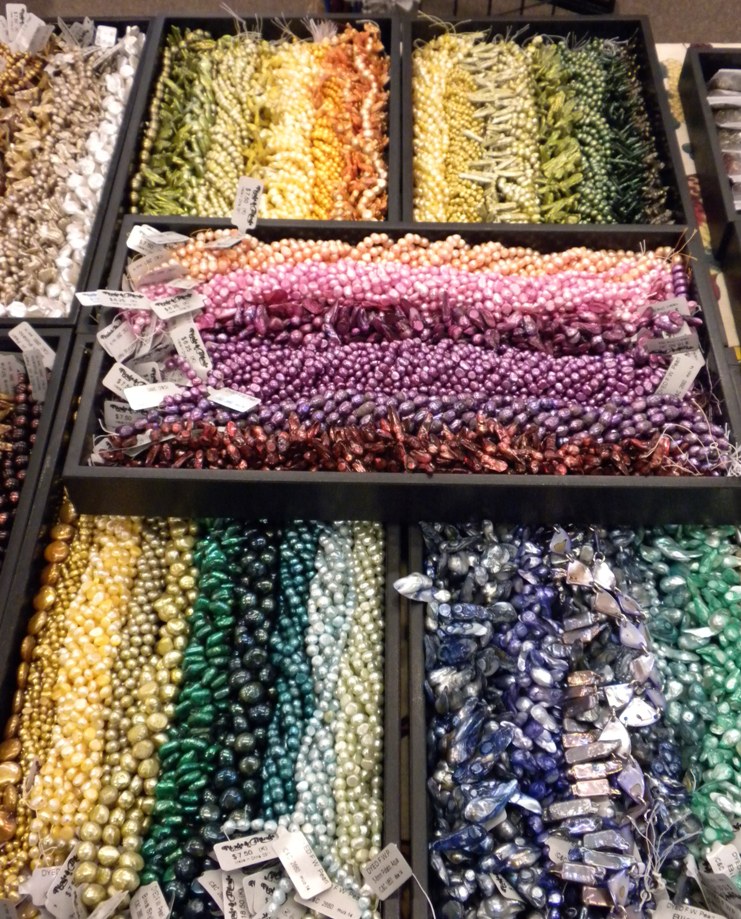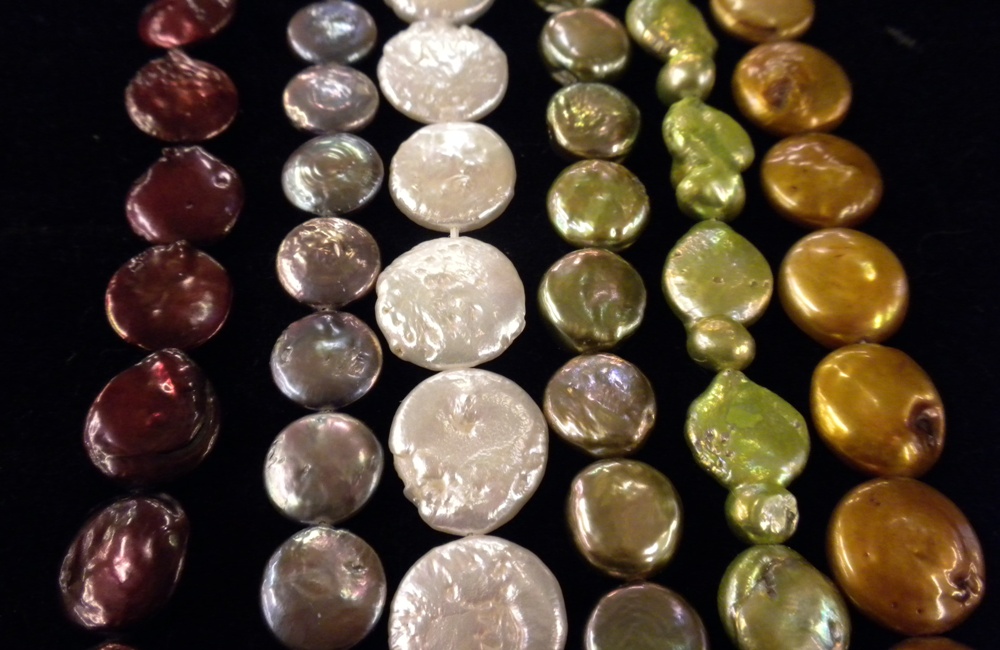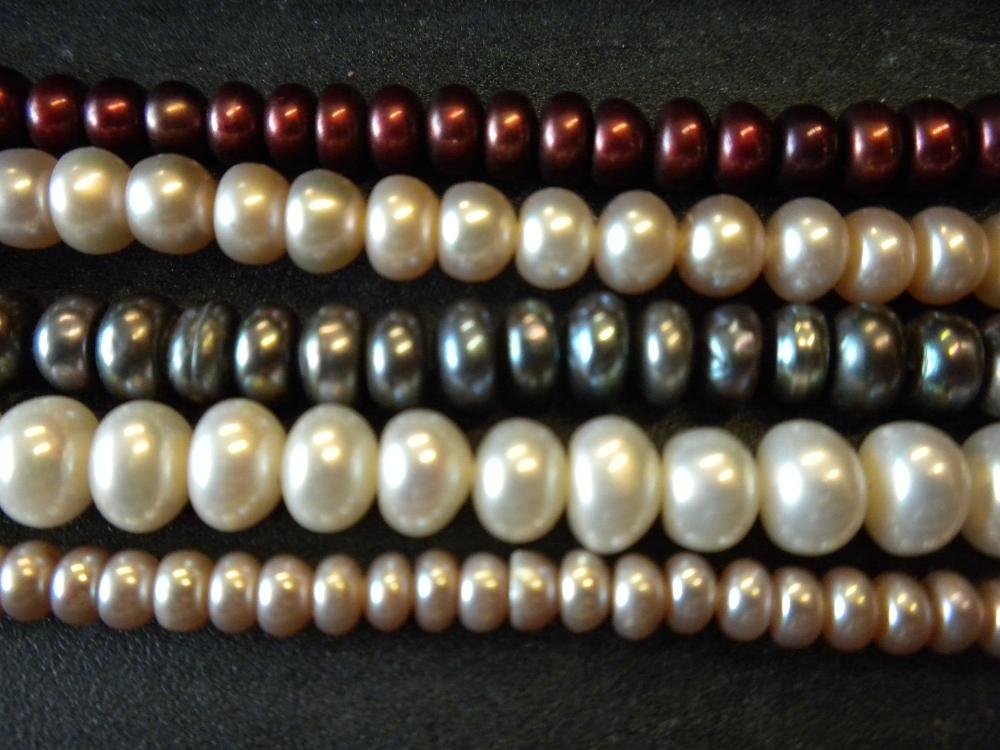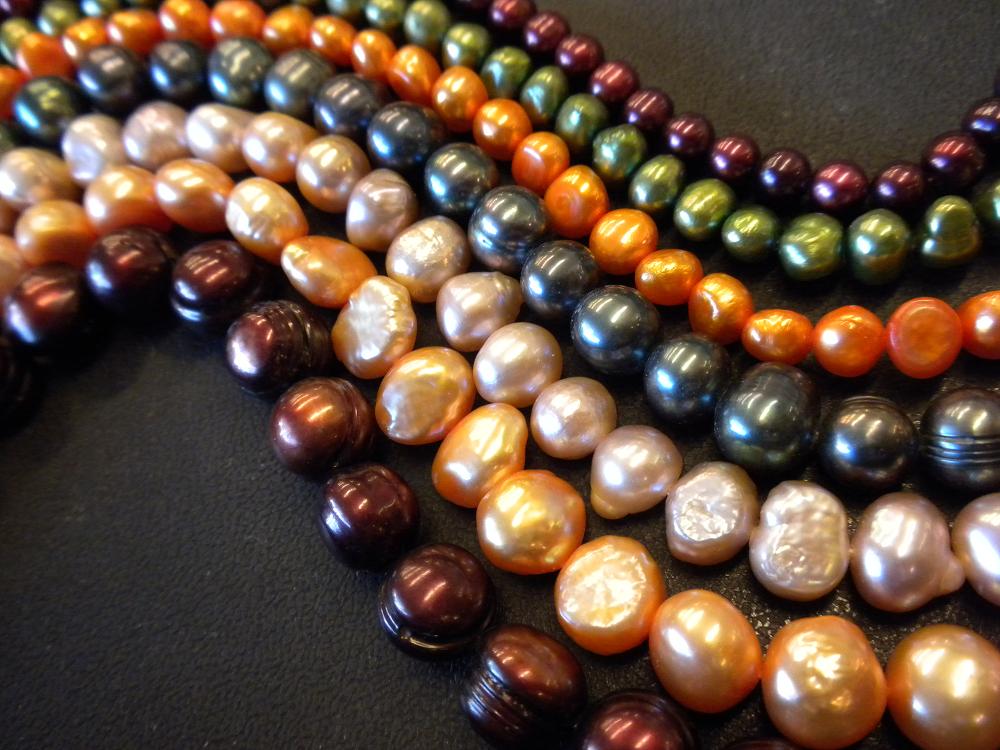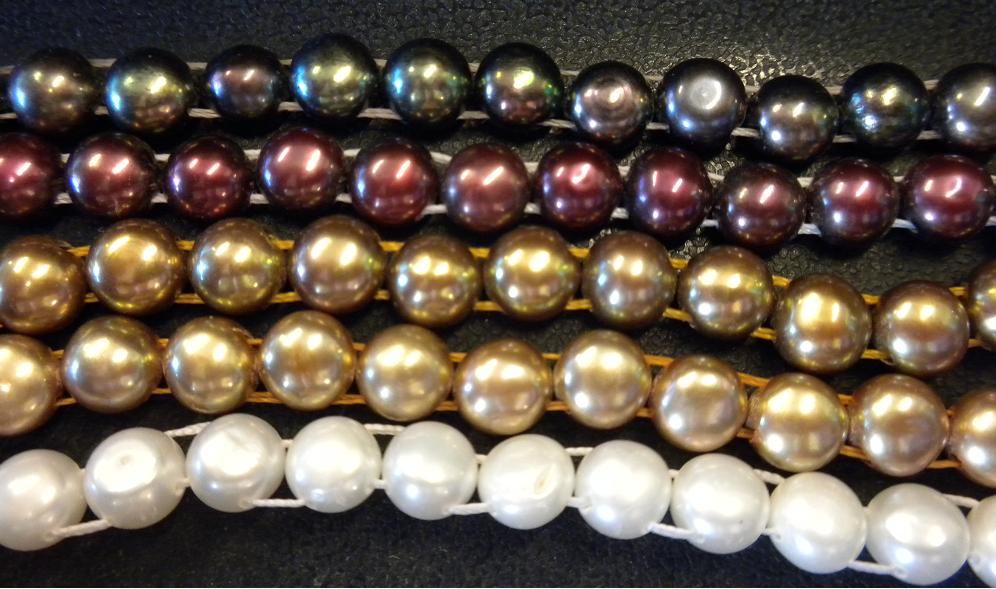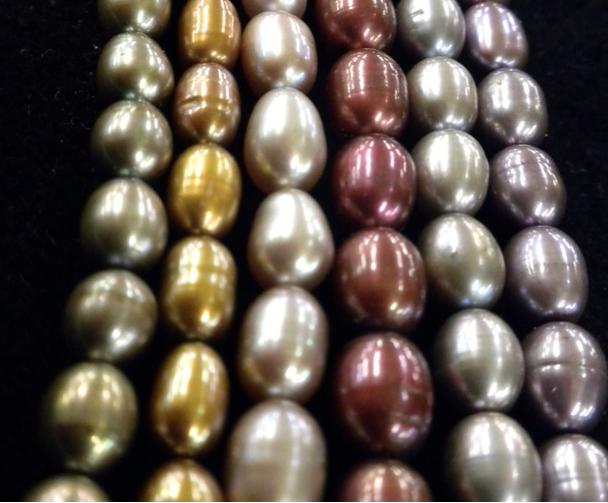Hi bloglandia! Pearls are a standard in jewelry, yet the shapes and colors available these days are anything but!
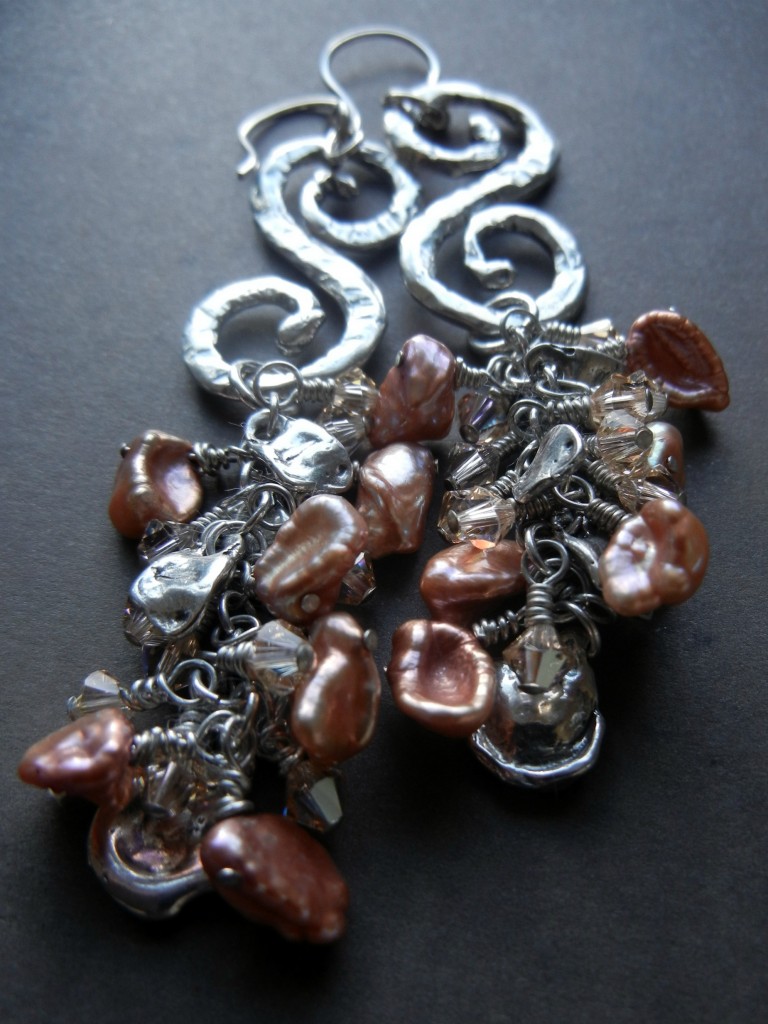
Sondra mixed freshwater keishi pearls with keishi-shaped sterling silver beads and Swarovski crystals. The clusters of pretties hang from Santa Me sterling silver swirls.
Keishi pearls are actually collapsed pearl sacs. To me they look like shimmery, shiny souffles that have drooped into ruffly, lacy waves. The picture below shows several shades of tip-drilled keishi pearls, including the rose ones Sondra used in the above earrings. Virtually all freshwater pearls are enhanced in one way or another, but I love how the colors still have such “natural” variation. Quite lovely.
Pearls are very soft compared to other gem materials. Since earrings are generally safe from much wear and tear, they are a great way to feature pearls, like with this Rosie Posie design:
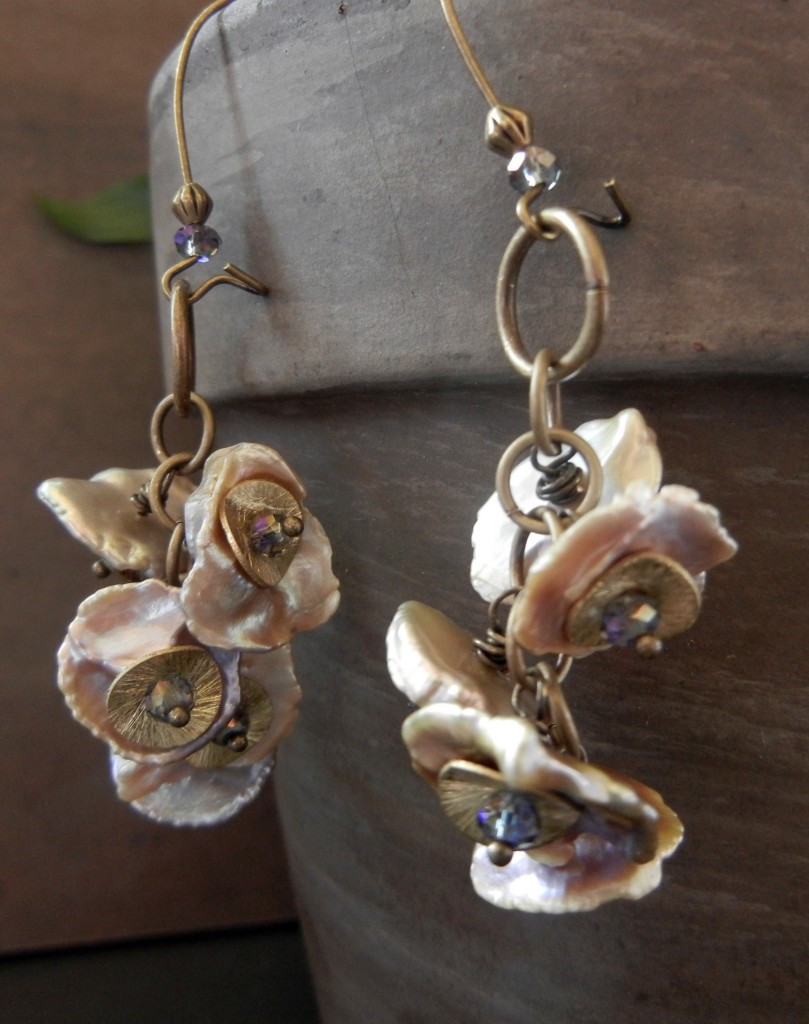
Wavy brass disks, 3mm sparkly glass rondelles and antiqued brass findings paired with center-drilled “cornflake” keishi pearls.
In addition to being soft, pearls are also sensitive to chemicals and solvents, so it is always best to put your pearl earrings on *after* you’ve applied your hairspray, perfume and such. They are pretty enough to warrant a little TLC!
I had a bit of sticker shock when I first saw the price for center-drilled keishi like the ones in the earrings above. Compared to our other freshwater pearls, they seemed pricey. But then I realized just how many of these guys you get on a strand: about 100!
If you’d like to learn more about how freshwater pearls are cultured and created – and more care recommendations! – visit our Gemstone Index. One last pointer on pearls: unless specifically noted, pearls almost always have small holes – even standard size head pins are usually too thick. Thin pins or 24-gauge wire works much better!

